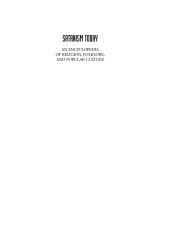I. VAMA MARGA Foundations Of The Left-Hand Path - staticfly.net
I. VAMA MARGA Foundations Of The Left-Hand Path - staticfly.net
I. VAMA MARGA Foundations Of The Left-Hand Path - staticfly.net
You also want an ePaper? Increase the reach of your titles
YUMPU automatically turns print PDFs into web optimized ePapers that Google loves.
exerts in each individual magician's consciousness that is the source of<br />
potential energy.<br />
To fully comprehend the meaning of left-hand path taboo violation in<br />
India, something of the importance of the concept of pollution and purity in<br />
Hinduism must be discussed. Innumerable actions are deemed to pollute the<br />
orthodox Hindu, who is restricted by strict religious law from eating,<br />
90<br />
marrying, or even socializing with members of other castes – just a few of the<br />
many deeds which are said to contaminate one's purity. <strong>The</strong> intricacy and<br />
arbitrariness of these laws beggars description, keeping every aspect of the<br />
orthodox Hindu's life regulated, especially for the high ranking Brahmins at<br />
the top of the hierarchy.<br />
<strong>The</strong> left-hand path initiate deliberately performs such polluting acts,<br />
inverting them as consecrated rituals, thus transcending divine laws. He or<br />
she who breaks the restrictions laid down by the gods is effectively<br />
transformed into a god-like being. Even in the social chaos of our own Kali<br />
Yugic time and culture, which lacks the strict concept of spiritual pollution<br />
known on the sub-continent, there are actions beyond the pale that<br />
possess the same kind of liberating power for the contemporary lefthand<br />
path initiate.<br />
91<br />
92<br />
93<br />
III.<br />
IN THE TEMPLE OF<br />
THE NINE GATES<br />
Ecstatic Rites <strong>Of</strong> <strong>The</strong> <strong>Left</strong>-<strong>Hand</strong> <strong>Path</strong><br />
<strong>Left</strong>-handed rituals derived their force from the deliberate reversal of the<br />
established morality. <strong>The</strong> explicit aim of the Five M's ritual is to raise the<br />
worshipper above praise, censure, shame, pride of family, and caste as a step<br />
toward liberation from the bonds which keep one from the supreme bliss; at<br />
the same time the ritual testifies that the prevailing morality forbade such<br />
things as wine, meat-eating, and sexual intercourse outside of wedlock.<br />
Geoffrey Parinder, World Religions<br />
<strong>The</strong> Five Secret Things<br />
<strong>The</strong> Indian left-hand path celebrates many sacred rites of taboo violation, the<br />
severity of which differ from sect to sect and region to region. <strong>The</strong> bestknown<br />
is probably the Panchamakara, or the five things" also known as<br />
Panchatattva the five tattvas. Once strictly guarded from non-initiates, the<br />
act of erotic theurgy sometimes called "the secret rite" has long since ceased<br />
to be secret. <strong>The</strong> Panchamakara is also commonly known as the rite of the<br />
"Five M's", as it involves the ritual consumption of five elements taboo to<br />
ordinary Hindus; the names of these elements all begin with the letter M .<br />
Although the secret rite may now seem rather tame to the modern<br />
Western reader, hardly deserving of its once secret status, it was<br />
extraordinarily transgressive for its practitioners, living as they did in a<br />
society surrounded on every side by the most scrupulously observed taboos.<br />
An in-depth analysis of the many layers of the meaning hidden in this<br />
notorious but often superficially explained ritual will allow the magician to<br />
access something of the complexity of the left-hand path's most well-known<br />
sacred act, and to view it from an initiated perspective.<br />
<strong>The</strong>re is a veiled mantric symbolism to the sound of M and the<br />
number five involved with the names of these forbidden elements, the first<br />
four of which are matsya (fish) mamsha (meat) madya (wine) and mudra<br />
(parched cereal, alternately beans). <strong>The</strong> fifth element is maithuna (ritual<br />
coitus). <strong>The</strong>se edible elements represent Water, Air, Earth, Fire, united by the
















